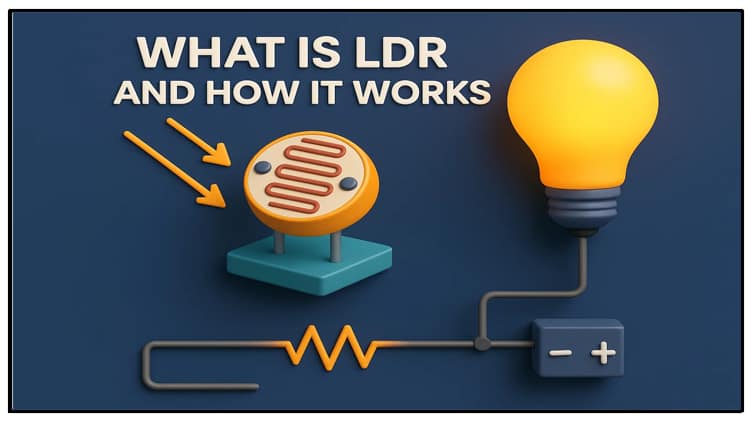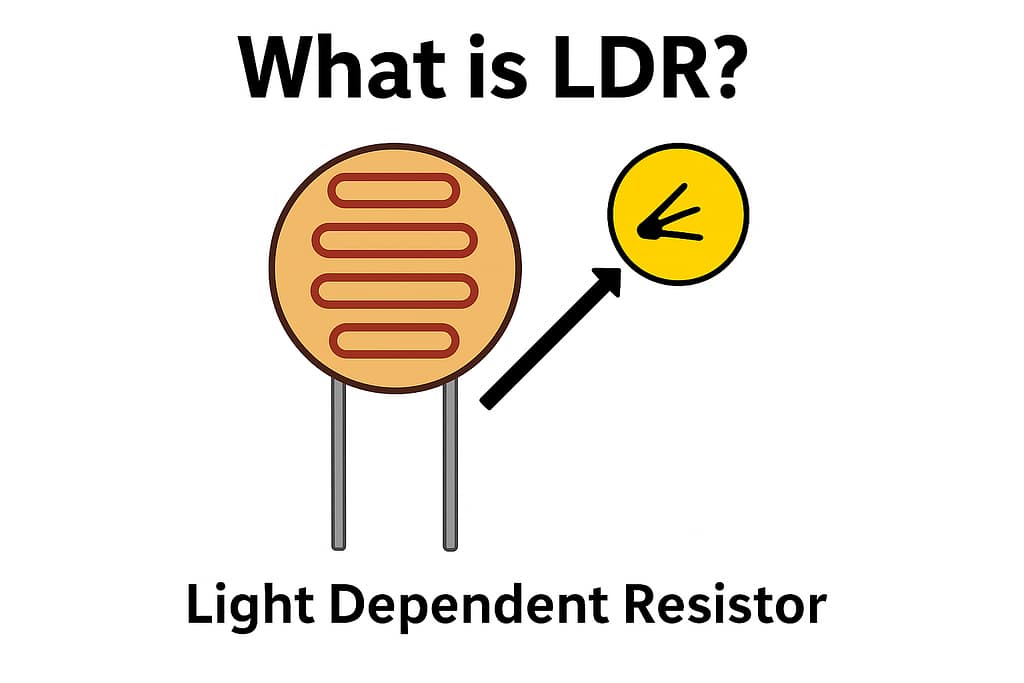7 Key Insights Into What is LDR and How It Works
What is LDR is a common question in electronics. What is LDR means Light Dependent Resistor, a component that changes resistance with light. What is LDR used for? It controls automatic lights, alarms, and sensors. What is LDR principle? It works on photoconductivity. What is LDR symbol? A resistor with arrows showing light. What is LDR benefits? Simple, cheap, and reliable. What is LDR applications? Used in street lights, cameras, and solar systems. What is LDR limitation? It responds slowly to light changes. What is LDR remains essential in electronics projects and automation.
Introduction
In electronics, sensors play a vital role in automation and smart control. Among them, one of the simplest yet most widely used sensors is the LDR (Light Dependent Resistor). This component is highly valued for its ability to sense light and convert it into resistance variations. In this article, we will explore what is LDR, how it works, its applications, advantages, limitations, and practical circuits.
What is an LDR?
An LDR (Light Dependent Resistor), also known as a photoresistor, is a passive electronic component whose resistance decreases when exposed to light and increases in darkness.
Dark Condition: Resistance is very high (up to several megaohms).
Light Condition: Resistance decreases significantly (a few hundred ohms).
Key Facts
Made from semiconductor materials like cadmium sulfide (CdS) or cadmium selenide (CdSe).
Sensitive to visible light spectrum.
Used in light sensors, alarms, and automation circuits.
![LDR Symbol Placeholder]
Principle of Operation – Photoconductivity
The working principle of an LDR is based on photoconductivity.
In the absence of light, very few charge carriers are available, so resistance remains high.
When light photons strike the LDR surface, electrons in the semiconductor material get excited into the conduction band.
This increases the number of free carriers, thereby decreasing resistance.
As a result, current flow increases with light intensity.
Symbol of LDR
The circuit symbol of an LDR is shown as a resistor with two arrows pointing toward it, indicating incoming light.
![LDR Circuit Symbol Placeholder]
Characteristics of LDR
Resistance range: 1MΩ (dark) to 200Ω (bright light).
Response time: Slow compared to photodiodes/phototransistors.
Material: Cadmium sulfide or cadmium selenide.
Temperature dependence: Performance changes with temperature variations.
Circuit Explanation – Voltage Divider with LDR
The simplest way to use an LDR is in a voltage divider circuit.
Working
Connect the LDR in series with a fixed resistor.
One end to Vcc, the junction point to ADC (Arduino input or comparator), and the other end to GND.
As light changes, the resistance of LDR changes → altering the voltage at the junction.
This varying voltage can be used for decision-making in circuits.
![LDR Voltage Divider Circuit Placeholder]
Practical Circuit – Automatic Street Light Using LDR
Working
In darkness, LDR resistance is high → transistor remains OFF → bulb lights up.
In light, LDR resistance drops → transistor conducts → bulb switches OFF.
BOM (Bill of Materials)
| Component | Quantity | Description | Buy Link |
|---|---|---|---|
| LDR | 1 | Light Dependent Resistor | [Buy Link] |
| BC547 Transistor | 1 | NPN transistor | [Buy Link] |
| 10k Resistor | 1 | For biasing | [Buy Link] |
| Relay | 1 | 5V SPDT relay | [Buy Link] |
| Bulb/LED | 1 | Load device | [Buy Link] |
| Power Supply | 1 | 5V–12V DC | [Buy Link] |
![Automatic Street Light Circuit Placeholder]
Step-by-Step Guide to Build the Circuit
Connect the LDR and a 10k resistor in a voltage divider arrangement.
Feed the junction voltage to the base of BC547 transistor through a bias resistor.
Connect a relay at the transistor’s collector to control the bulb/LED.
Provide a DC supply (5–12V).
Test by covering/uncovering the LDR → light turns ON/OFF automatically.
Applications of LDR
Automatic Street Lights – Switches ON at night and OFF during the day.
Solar Garden Lights – Activates in darkness.
Camera Exposure Systems – Adjusts shutter automatically.
Burglar Alarm Systems – Detects shadows/objects.
Industrial Light Sensors – For automation.
Lux Meters – Measures light intensity.
Advantages of LDR
Very low cost.
Simple to use.
Wide resistance variation.
No external bias required.
Limitations of LDR
Slow response time – not suitable for high-speed applications.
Sensitive to temperature variations.
Limited to visible spectrum.
Material degradation over time (CdS restriction in RoHS compliance).
Advanced Alternatives to LDR
Photodiodes – Faster response.
Phototransistors – Higher sensitivity.
Digital Light Sensors (like BH1750, TSL2561) – Direct lux measurement.
FAQs
1. What is LDR in simple words?
It is a resistor that changes its resistance depending on the amount of light falling on it.
2. What is the working principle of LDR?
It works on photoconductivity – resistance decreases when exposed to light.
3. Where are LDRs used?
In street lights, alarms, cameras, solar systems, and automation projects.
4. Is LDR analog or digital?
LDR gives an analog response (varying resistance/voltage).
5. What is the difference between LDR and photodiode?
LDR is slower and cheaper, photodiodes are faster and more precise.



